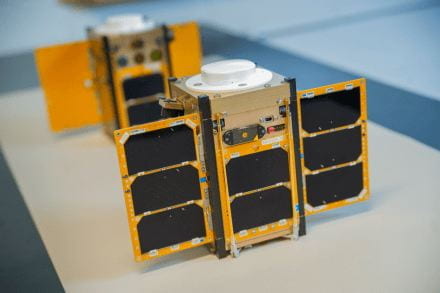The RANGE mission involves two 1.5U satellites flying in a leader-follower formation. The goal of this mission is to improve the positioning (relative and absolute) capabilities of nanosatellites.
Craft Overview:
Each cubesat involved in the mission is a 4kg, 1.5U cubesat. Each cubesat is solar-powered, with 2 deployable solar arrays, solar cells, and batteries.
The relative position of each satellite is measured using an on-board compact laser ranging system. This compact laser ranging system also doubles as a low-rate optical communication system. The satellites do not contain an active propulsion system so the distance between the two is controlled through differential drag techniques.
Deployment:
RANGE was successfully launched into orbit on December 3rd, 2018. RANGE was launched on board a SpaceX Falcon-9 rocket as part of Spaceflight’s SSO-A mission. RANGE is Georgia Tech’s first small satellite to reach orbit.
Sources and Additional Information:
- https://ssdl.gatech.edu/index.php/research/projects/ranging-and-nanosatellite-guidance-experiment-range
- https://ae.gatech.edu/news/2018/12/its-space-georgia-techs-range-cubesat-launched-december-3
- https://space.skyrocket.de/doc_sdat/range.htm
- https://www.n2yo.com/satellite/?s=43773
- http://www.amsatuk.me.uk/iaru/formal_detail.php?serialnum=497
| Acronym | RANGE |
| Full Name | The Ranging And Nanosatellite Guidance Experiment |
| Size | Two 1.5U |
| Status | In Orbit |
| Launch Date | December 3rd, 2018 |
| NORAD ID | 43773 |
| Downlink Frequency | 437.15 (MHz) |
| Principal Investigator | Brian Gunter |

